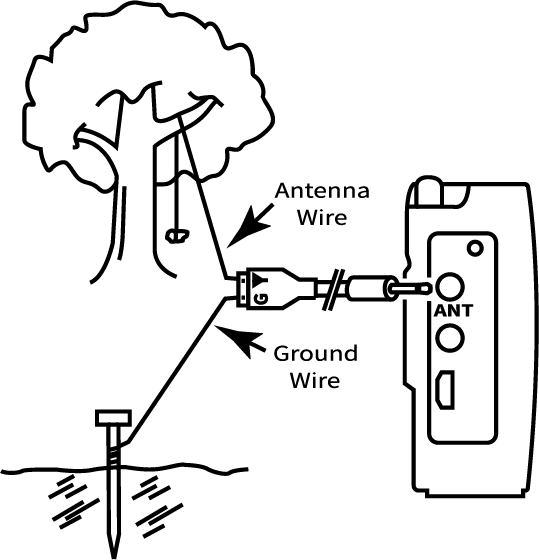How To Make A Shortwave Antenna For The NEW CC Skywave 2With the new shortwave antenna input jack on the CC Skywave 2, connecting a DIY SW antenna can be a lot easier. Rather than using an alligator clip to attach to the whip antenna you can use the optional CC Wire Terminal Antenna Adapter accessory. My favorite SW antenna wire is 100 feet of 20 gauge stranded black hook up wire. It’s small enough to go through a window and close it. Always test your antenna before you take the time to make it look nice and neat. The wire should be a minimum of 65 feet long because it works well but the full 100 feet is better. Try to send it up to a tree branch as high as possible in a North-East / South-West direction, which is favorable for reception. Safely throwing a rock over the branch or casting a fish line can work. Stay well away from power lines which can be dangerous and add electrical noise. There is no need for a dangerous ladder.
If you don’t have a tree, let’s try creativity:
More antennas can be found by searching on Google for "shortwave antenna diy". |
Outdoor Installation Precautions |
|---|
| Lightning poses a serious hazard to you and your radio equipment. Your antenna is a conductor. If it is struck by lightning (or touched by a live power line), it will conduct this electricity into your home. Safety precautions require that you equip your antenna with lightning protection equipment. The equipment needed and installation methods can vary from area to area. WE RECOMMEND THAT YOU HIRE A LICENSED, BONDED, AND EXPERIENCED PROFESSONAL TO HELP WITH OUTSIDE INSTALLATIONS. |

 Loosen both wire terminal screws on the CC Wire Terminal Antenna Adapter.
Loosen both wire terminal screws on the CC Wire Terminal Antenna Adapter.